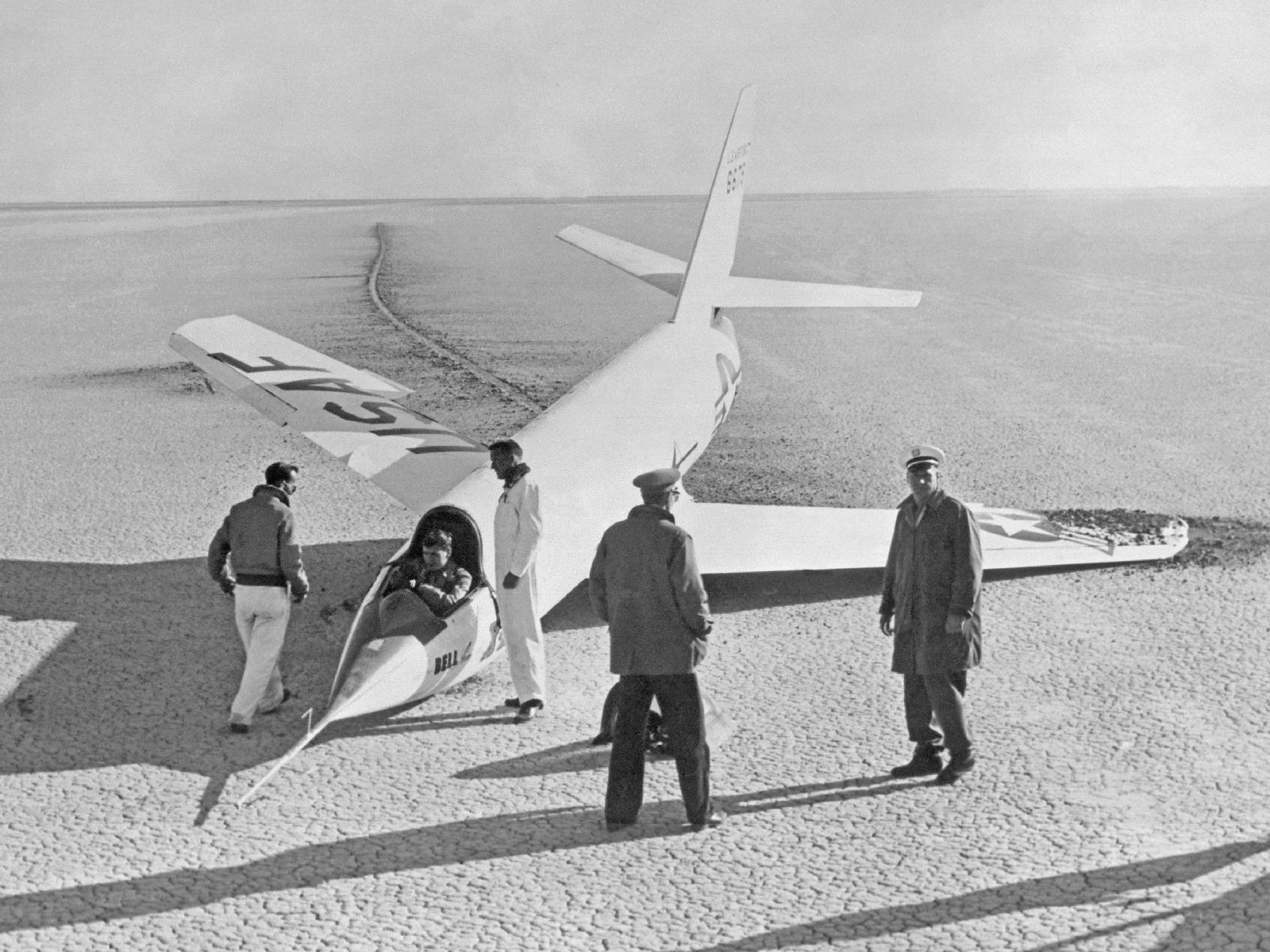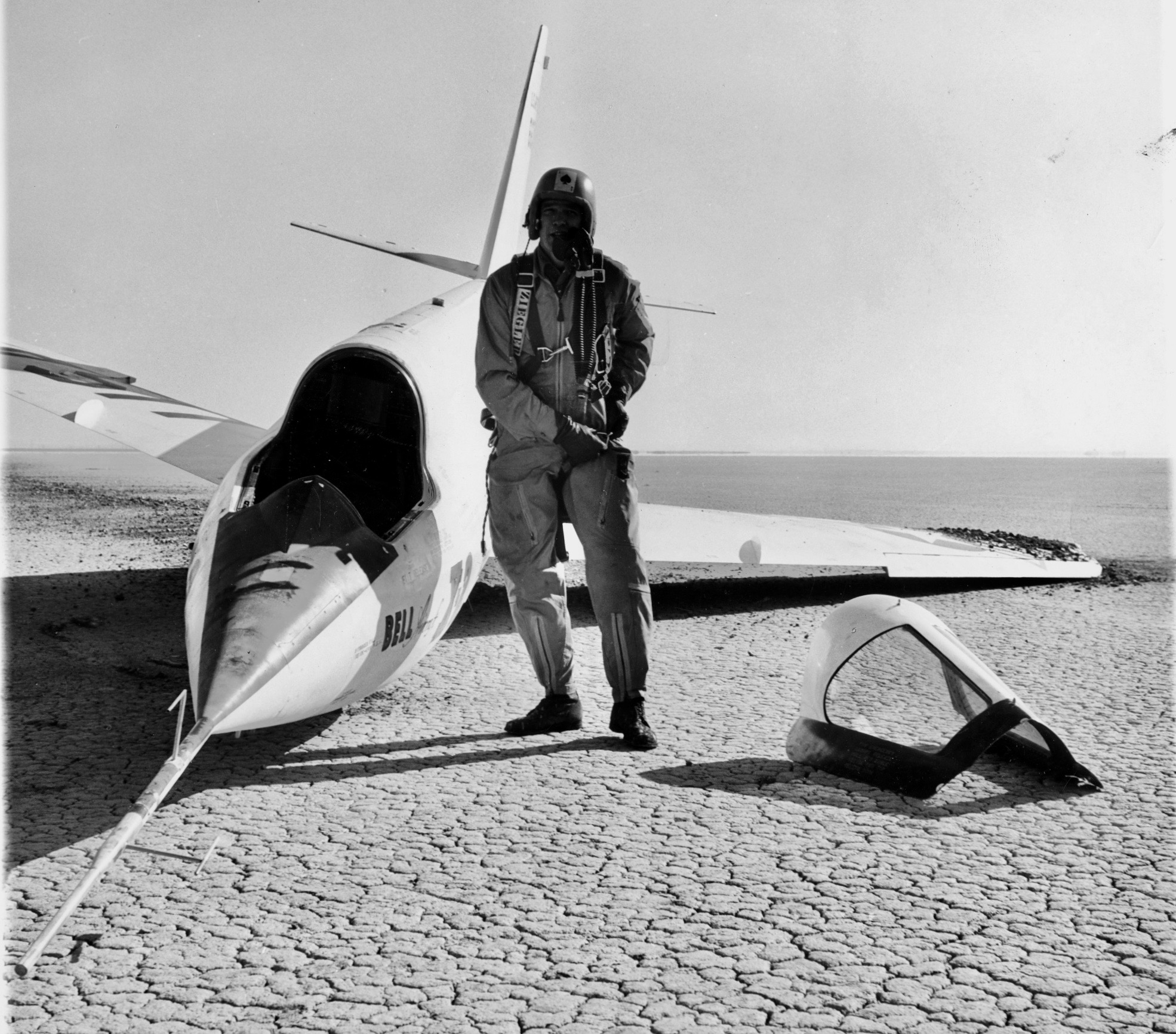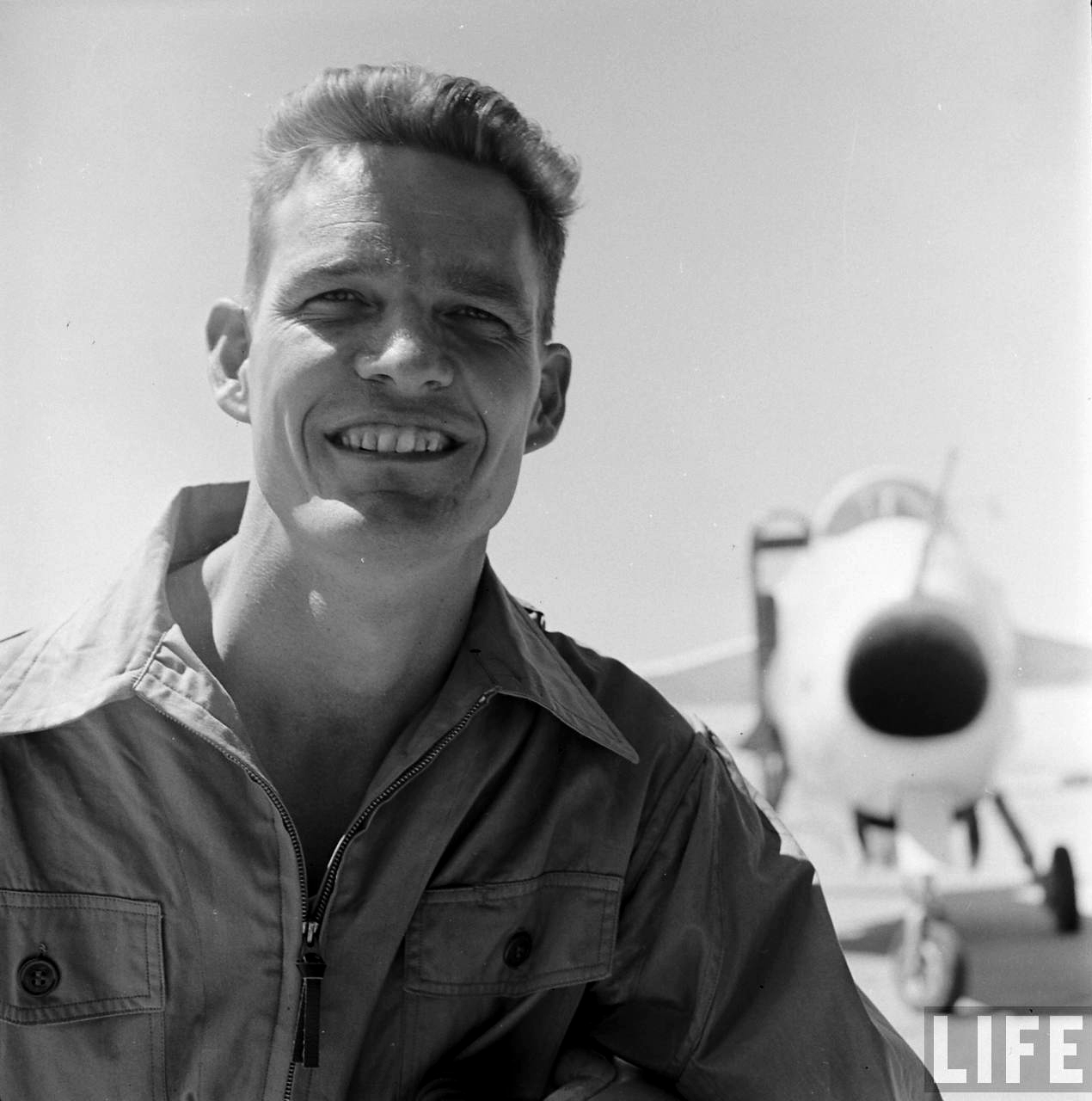
27 June 1952: The Bell X-2 research rocketplane, with company test pilot Jean Leroy (“Skip”) Ziegler at the controls, was airdropped from a “mothership,” a Boeing B-50A-5-BO Superfortress, 46-011, over Edwards Air Force Base, California. This was the first flight of the X-2 Program, and was an unpowered glide flight for pilot familiarization.
On touch down, the nose wheel collapsed and the aircraft slid across the dry lake bed, but was not seriously damaged.
Two X-2 rocketplanes, serial numbers 46-674 and 46-675, were built by the Bell Aircraft Corporation, which has also built the X-1 series. The second X-2 was the first one to fly.

The X-2 was a joint project of the U.S. Air Force and NACA (the National Advisory Committee for Aeronautics, the predecessor of NASA). The rocketplane was designed and built by Bell Aircraft Corporation of Buffalo, New York, to explore supersonic flight at speeds beyond the capabilities of the earlier Bell X-1 and Douglas D-558-2 Skyrocket. In addition to the aerodynamic effects of speeds in the Mach 2.0–Mach 3.0 range, engineers knew that the high temperatures created by aerodynamic friction would be a problem, so the aircraft was built from Stainless Steel and K-Monel, a copper-nickel alloy.



A four-engine Boeing B-50A Superfortress bomber, serial number 46-011, was modified as the ”mothership.” A second Superfortress, B-50D-95-BO 48-096, was also modified to carry the X-2, and was redesignated EB-50D. During the flight test program, the X-2 reached a maximum speed of Mach 3.196 (2,094 miles per hour, 3,370 kilometers per hour) and a maximum altitude of 126,200 feet (38,466 meters).
On 12 May 1953, less than one year after the first glide flight, Skip Ziegler was in the cockpit of 46-675 while it was being carried on a captive test flight aboard the B-50A Superfortress. An internal explosion destroyed the X-2 and killed Ziegler and another crewman aboard the mothership. The rocketplane fell into Lake Ontario and neither it nor Ziegler’s body were ever recovered. The Superfortress was able to land, but was so badly damaged that it never flew again.

© 2018, Bryan R. Swopes
The caption on the second picture is missing Ziegler’s name
Thanks for TDiA!
Thans! I fixed it.
Profound thanks and appreciation for those who gave all to make this day in aviation history.
these very brave men paved the way for the4 development of all powered flight.